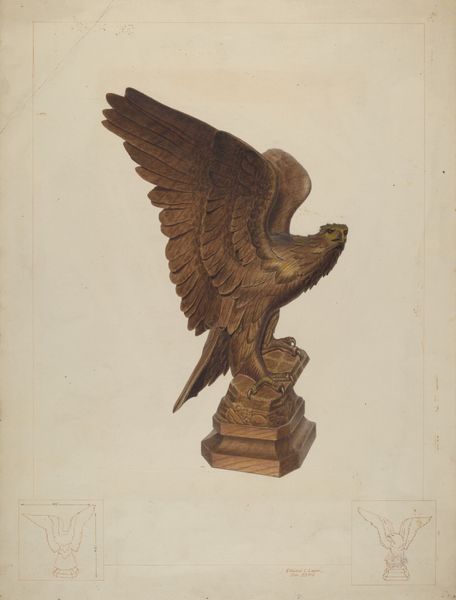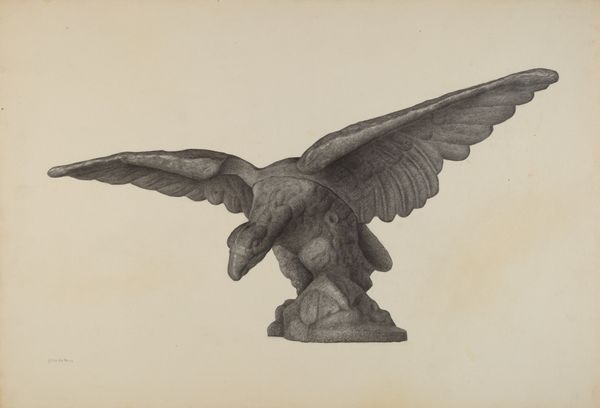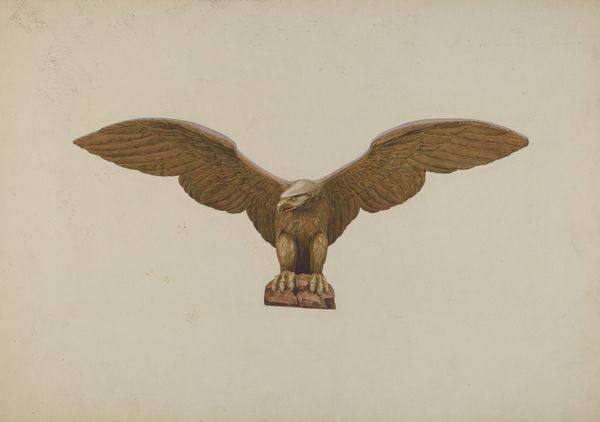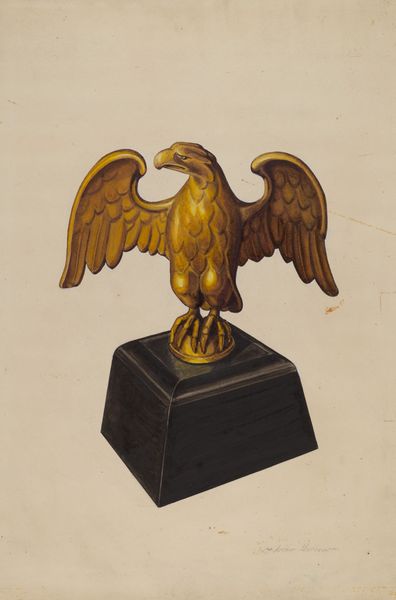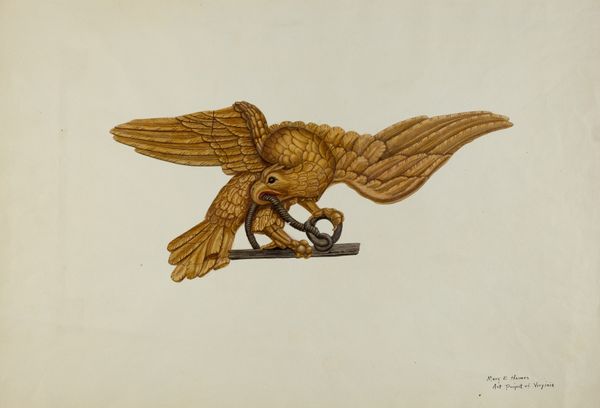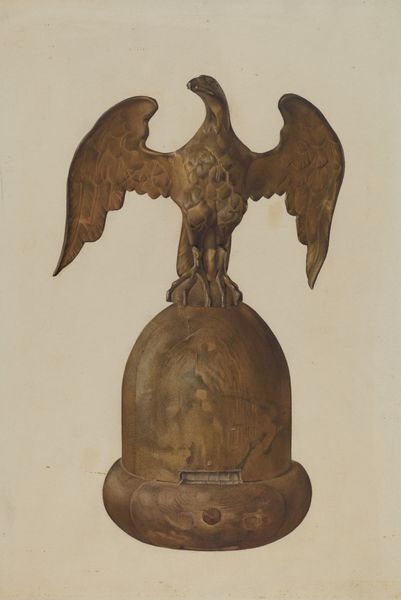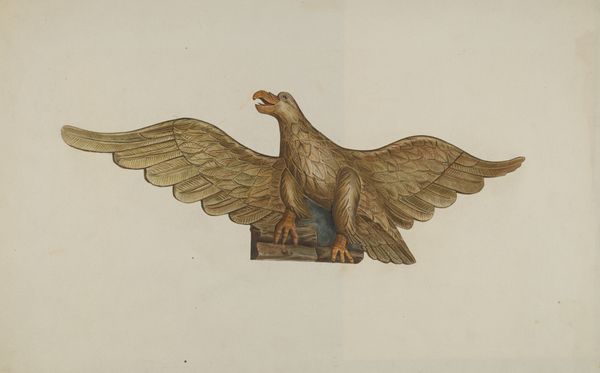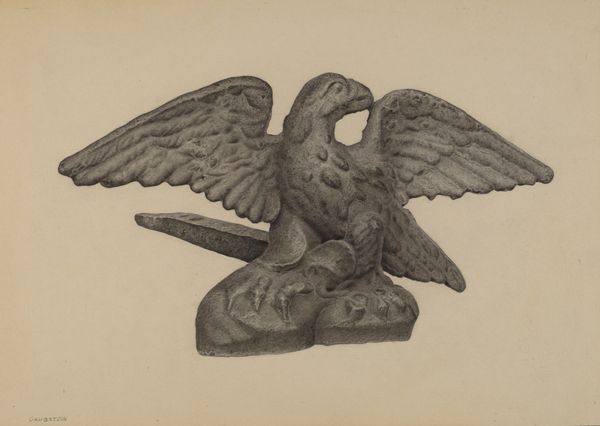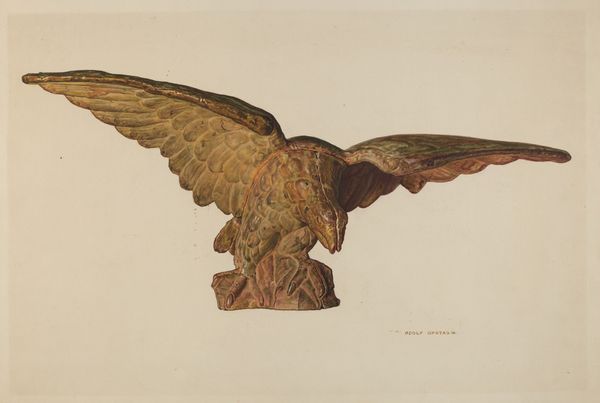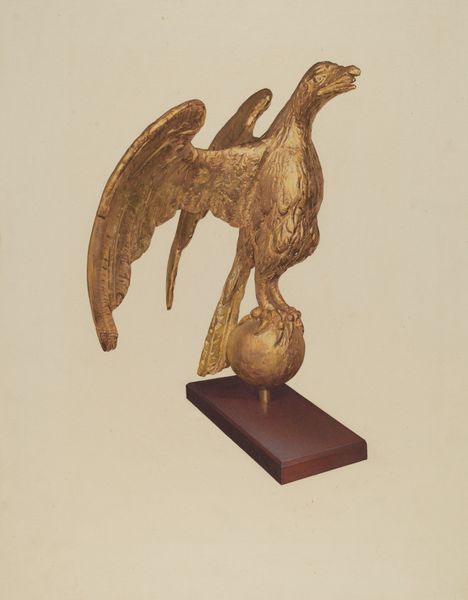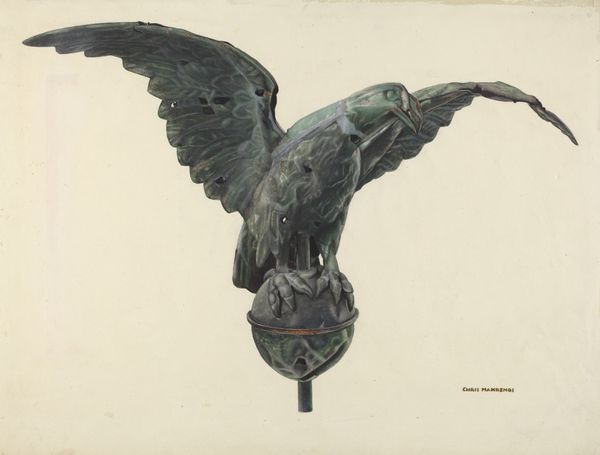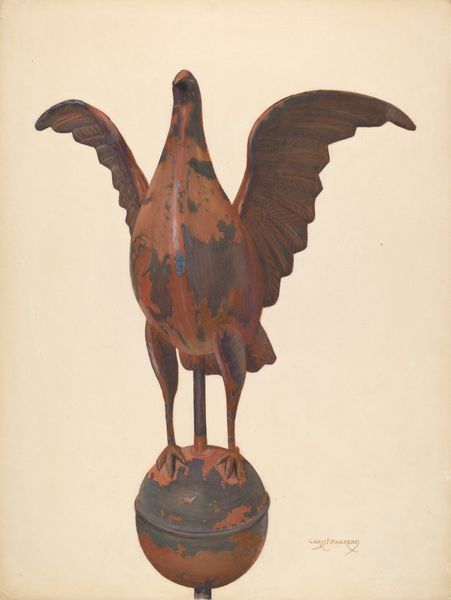
drawing, watercolor, pendant
#
drawing
#
charcoal drawing
#
watercolor
#
watercolour illustration
#
watercolor
#
pendant
Dimensions: overall: 52.9 x 39.2 cm (20 13/16 x 15 7/16 in.)
Copyright: National Gallery of Art: CC0 1.0
Editor: So this is Molly Bodenstein's "Eagle: Pilot House Ornament," a watercolor and charcoal drawing from around 1938. The eagle's depicted with its wings spread, ready for flight, perched on a dark, geometric base. I’m curious about its potential social implications. What strikes you most about it? Curator: The eagle imagery during this period is fascinating. The 1930s saw the rise of distinct nationalistic symbols, with the eagle prominently featured in many contexts, especially government projects and buildings, reflecting an urge for national identity. Consider the Works Progress Administration - this print might be linked to designs created through this initiative. Does its potential role as a "Pilot House Ornament" on a vessel modify your understanding? Editor: It makes me think about seafaring and trade, but I didn't initially connect that with nation-building at all. What was the significance of the ornament on a ship's pilot house? Was this purely decorative, or did it serve a symbolic purpose? Curator: It likely combined both functions. Think of the ornament as part of an artistic language where the state is embedded in functional objects; its display on a ship connects commerce, defense, and state power. It broadcasts messages about the values, authority, and aspirations of the nation and who controls this body of water. How would its potential placement have influenced its reception at the time? Editor: I suppose it would reinforce a sense of American strength and presence to both Americans and people from other nations visiting via ship. I hadn’t considered the politics embedded in its design! Curator: Indeed. It exemplifies how art becomes a visual language expressing political and social dynamics. This emblem can reveal layers of how national identity was constructed and disseminated. Editor: I never thought about symbols used as ornaments in this way, so now I’ll have to think about all the art I encounter with this expanded historical and sociopolitical context. Thank you!
Comments
No comments
Be the first to comment and join the conversation on the ultimate creative platform.
